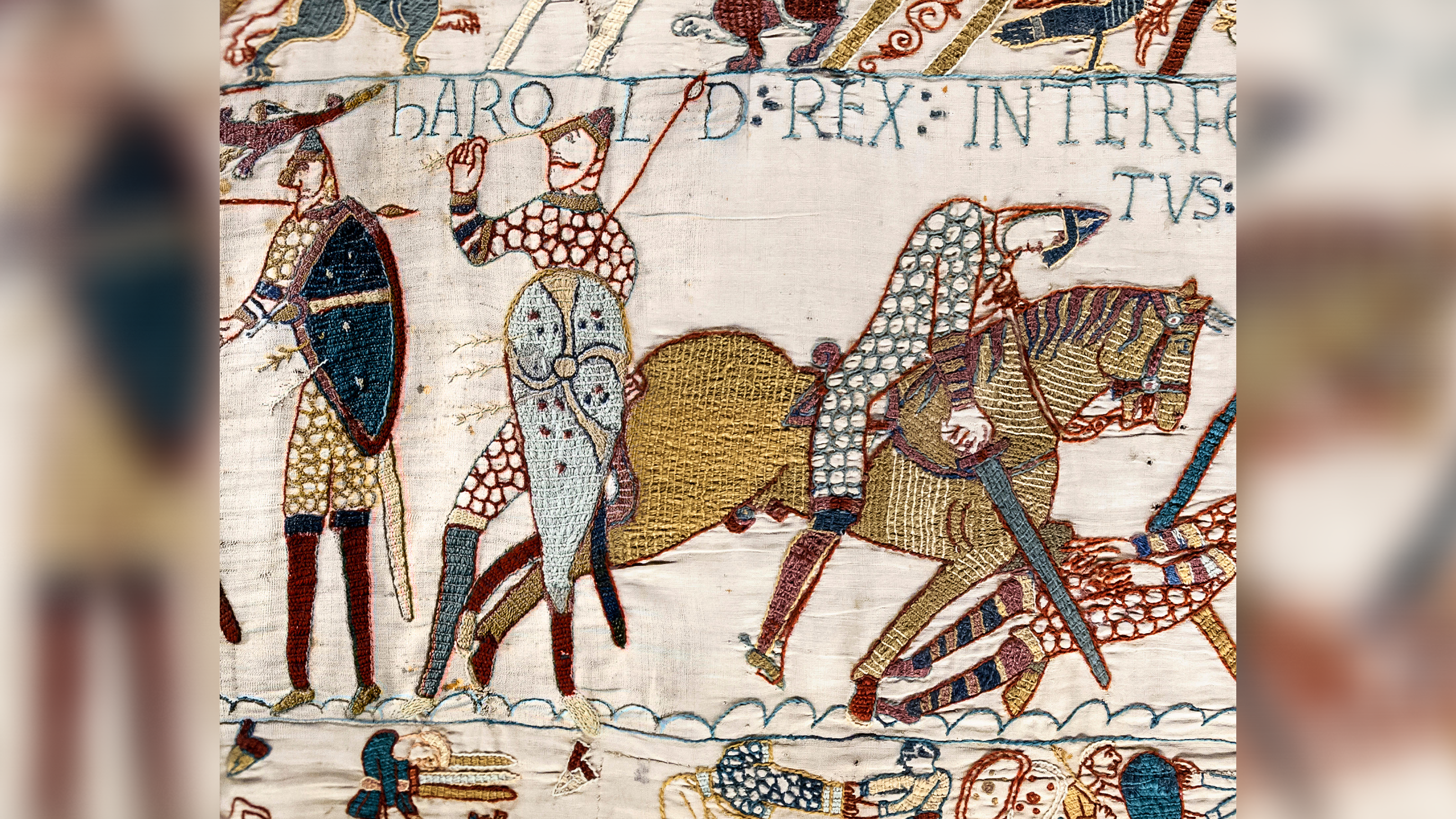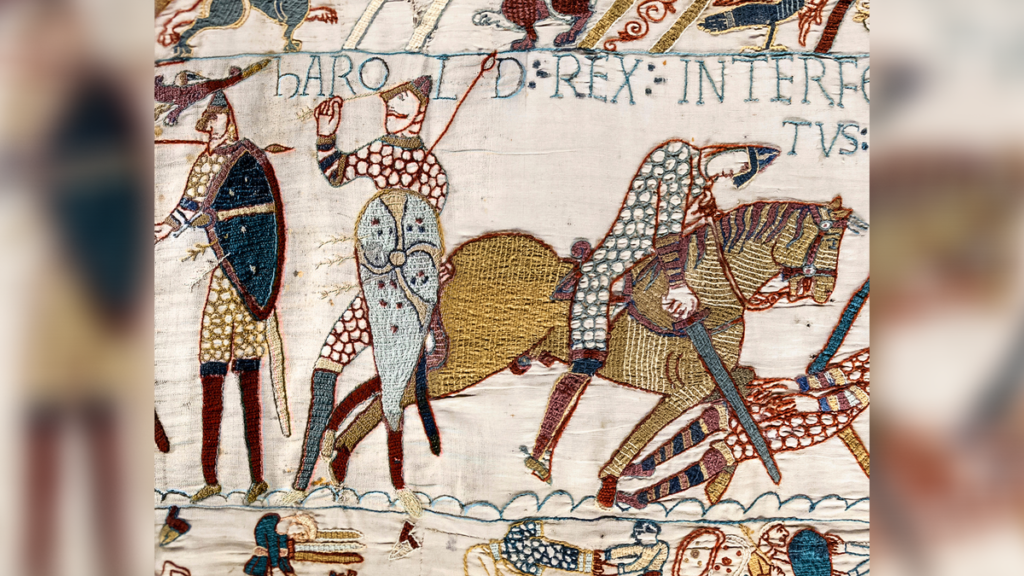
Name: Bayeux Tapestry
What it is: A roll of linen cloth with wool embroidery depicting scenes from the 11th century
Where it is from: Bayeux Cathedral in Normandy, France
When it was made: The late 11th century
Related: Bad Dürrenberg headdress: An elaborate 9,000-year-old headpiece worn by a female shaman in Europe
What it tells us about the past:
This tapestry was first recorded in 1476 as part of the inventory of the Bayeux Cathedral, but it was likely commissioned in the 1070s by Bishop Odo, a close relative of William the Conqueror, to commemorate his success in the Norman Conquest of England, according to the Bayeux Museum, where the artifact is on display.
Consisting of 58 scenes stitched into the linen cloth in different colors of wool, the medieval work of art — which is technically an embroidery rather than a woven tapestry — measures nearly 230 feet (70 meters) long and 20 inches (50 centimeters) tall. Each scene is labeled with a basic caption in Latin.
The tapestry depicts key moments in history from 1064 to 1066 — mainly the struggle between Harold, the last Anglo-Saxon king, and William, Duke of Normandy, for control over the throne of England following a succession crisis when King Edward the Confessor died childless. This came to a head at the Battle of Hastings in October 1066. In a decisive victory, William and his troops prevailed and King Harold was killed, beginning the Norman Conquest of England. For this reason, he is often called William the Conqueror.
Scenes on the tapestry give historians key information about this period not known from other sources. For example, the tapestry shows Harold taking an oath on saintly relics, although the nature of the oath is unknown. Another scene shows Edward the Confessor on his deathbed, giving his crown to Harold, but historians disagree on whether this actually happened. And at Harold’s coronation, the tapestry includes a star with a streaming tail — the first known depiction of Halley’s Comet.
MORE ASTONISHING ARTIFACTS
The last scene on the Bayeux Tapestry shows the Battle of Hastings. The English are fighting on foot, while the Normans are on horseback. Bloody, dismembered corpses litter the ground, and the death of King Harold is illustrated, after which the English are shown fleeing. Missing from the tapestry is another panel or two, which may have depicted William the Conqueror’s coronation as King of England.
Regardless of whether the events in the tapestry are strictly historically accurate, the artifact is important for its visual record of medieval weapons, ships, architecture, clothing and other objects from daily life.
This 1,000-year-old textile has been conserved and restored over the centuries, and a new museum is being built for the object, with a planned opening in 2027. The entire tapestry can be fully explored on the Bayeux Museum’s website.
